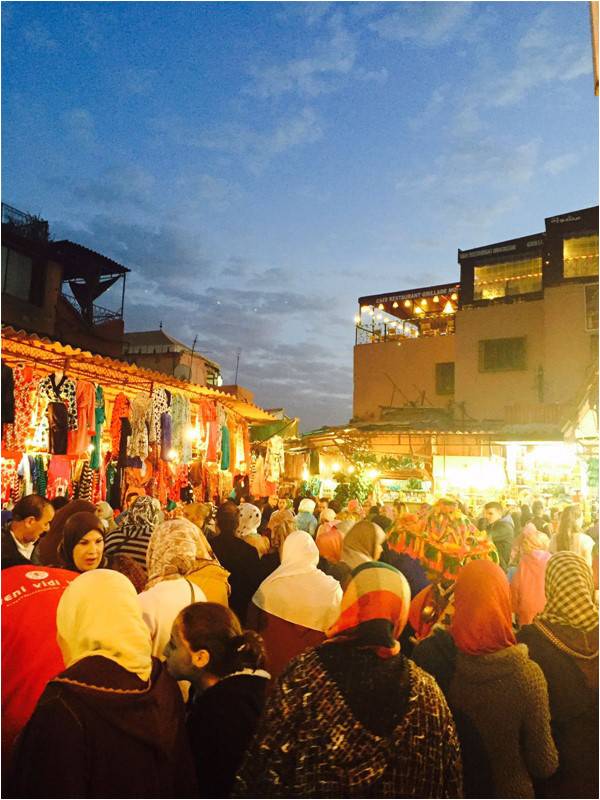
Often, travelling with books is the best way to travel. Writers are particularly observant about their surroundings and are able to capture the essence of a place so beautifully - whether through an amalgam of stories, evocative imagery or vivid descriptions.
Through books I have explored the deserts of North Africa with Michael Ondaatje’s The English Patient, through the eyes of Bill Bryson I have hiked through America and through Auden’s poetry I have retraced my steps in the English countryside. Books can sometimes be the perfect travelling companion, particularly on a solitary voyage when one needs a companion who can communicate without being talkative.
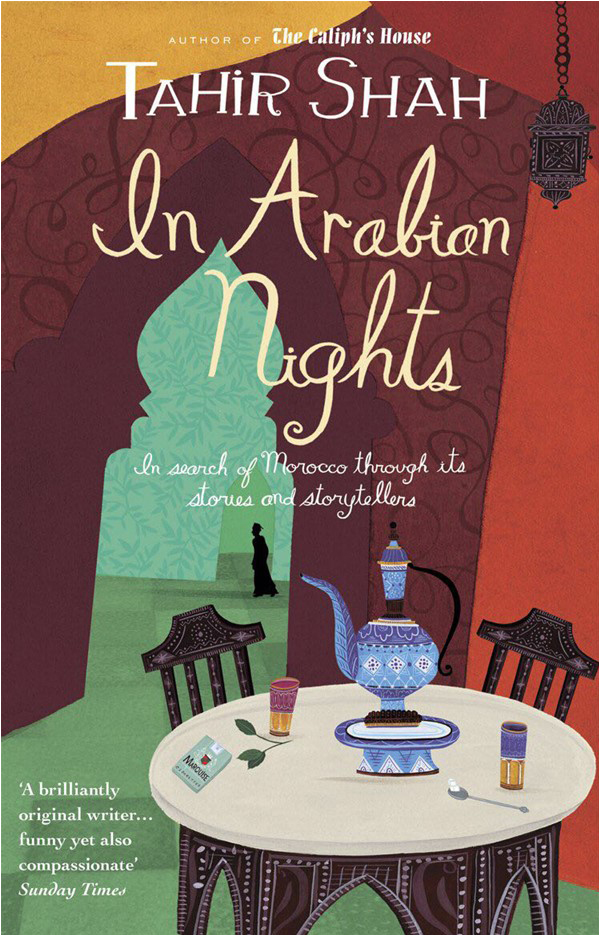
Recently, I made a quick trip to Morocco with Tahir Shah’s In Arabian Nights: A Caravan of Moroccan Dreams. This transformed an ordinary work trip into an amazing getaway – based on a very different way of seeing North Africa, replete with ancient storytellers and snake merchants. Despite visiting Morocco several times, I had never made it to Marrakech and once there, I instantly regretted not having made the effort earlier.
Tahir Shah has quite an interesting background. His father Idris Shah was known for his inimitable book on the Sufis. Having lived in London for a few years, Shah and his family decide to move to Morocco after he fell in love with a dilapidated house in Casablanca and then restored it. The books he writes about the experience are eminently readable and very evocative; one feels the vibrancy of his personality and a great sense of warmth through his text.
Marrakech is a hard city not to fall in love with. Tahir Shah was not the only one to lose his heart there. The iconic French designer, Yves Saint Laurent, once declared that Marrakech had taught him everything about color. His villa and stunning gardens, Les Jardins Majorelle, are one of the most visited sites in Marrakech. He wisely chose this peaceful oasis as his final resting place. Reputedly one of the most luxurious gardens of the world (that’s right: it ranks up there with our very own Shalimar gardens in Lahore), the whole garden is accented with peacock green and Mediterranean blue colours - with desert cacti and blooms in equal balance. The use of color is critical in experiencing Marrakech. Tahir Shah’s lovely book highlights the colours of Morocco; whether bright lapis blue or warm terracotta rust.
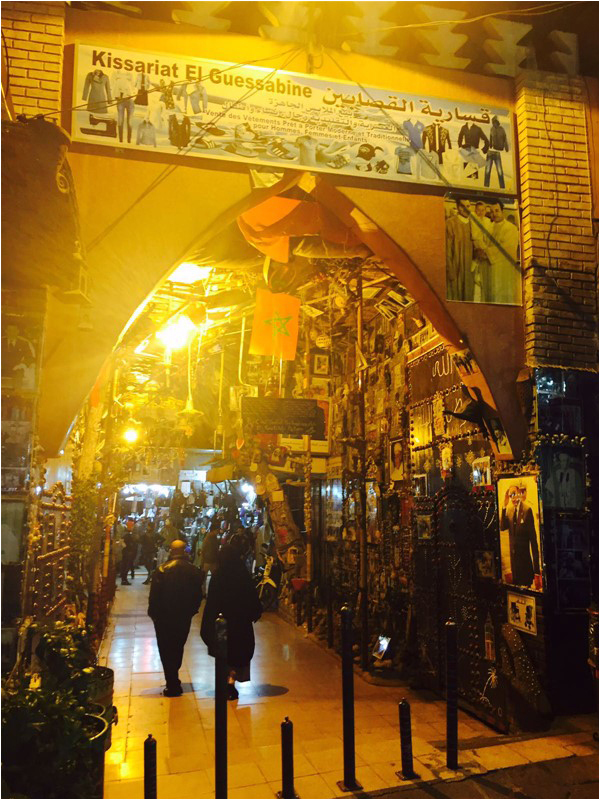
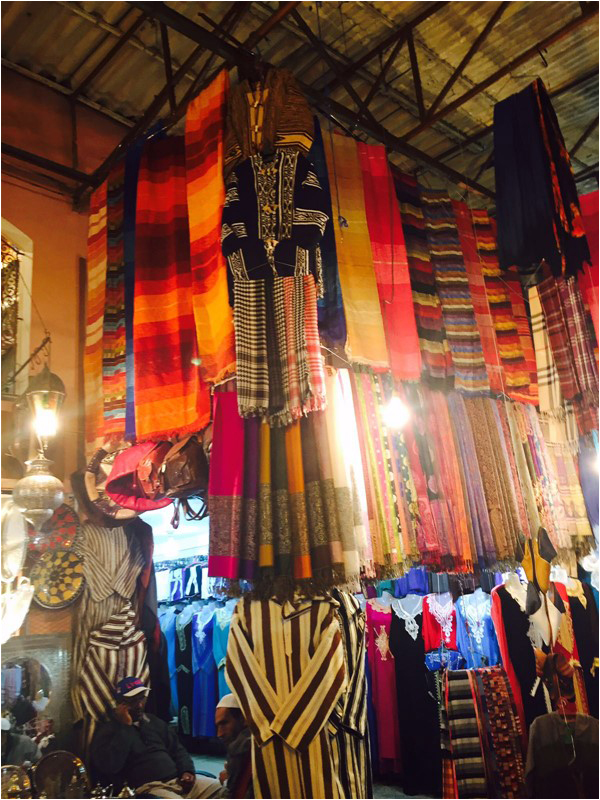
The grounds had originally been designed by Pierre Majorelle and fallen into disrepair until YSL and his partner restored them with such attention to detail and stylistic flair that one stops dead in one’s tracks at the beauty of it. Each section houses many different forms of flowering plants, including desert cacti and fountains. YSL designs are available, as is his lesser known art exhibit which show cased the seasonal greeting cards he designed over the course of four decades. The theme was always L’Amour (love)!.
The house exhibits a small collection of Berber jewelry, clothes and a book store. The most magical room showcases Moroccan gems and one looks up at the starry night sky while doing so. The aesthetics throughout the villa are simple, using motifs such as green and blue tiles that make it instantly and recognisably Moroccan.
Majorelle Bleu has actually been patented into its own paint color by YSL. Though I have tried to replicate this in my garden at home, it does not match the unique Moroccan tone. The Jardins Majorelle are a microcosm of Moroccan taste; with traditional cedar wood, sculpted plaster work and terracotta bathed in warm Mediterranean sunshine. The hotels around the old District are also a breathtaking tribute to the sophisticated architecture and rich artisanal culture of Morocco.
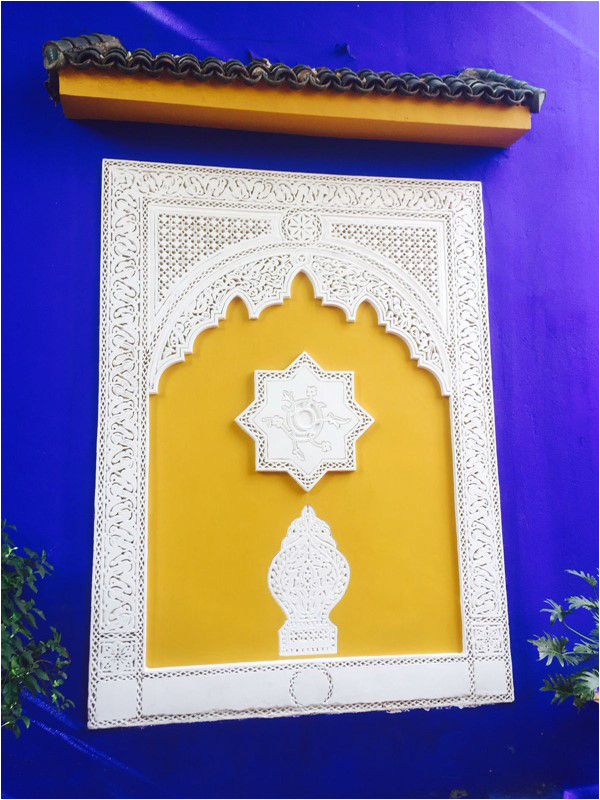
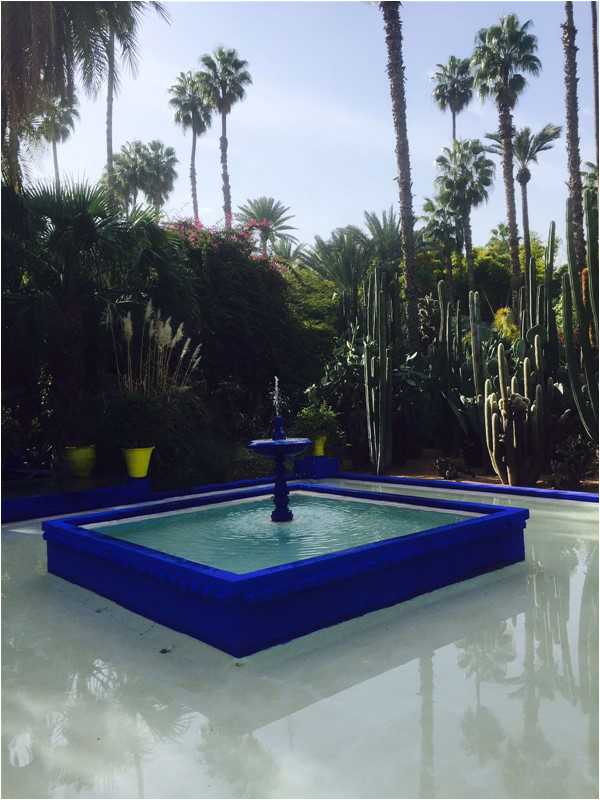
The image most associated with Marrakech is the main square of Jemaa el-Fnaa, the congregation square which is the epicentre for the Marrakech souk. It changes character as day gives way to night. One enters through smaller side streets lined with miniature trees laden with fresh oranges. Snake charmers chase you in the hope of hypnotising you into handing over cash for photos with their snakes. Berber men offer fresh mint tea served from silver tea pots and an old medicine man sits forlornly among piles of large slate gray ostrich eggs.
As I wandered around, the evening air was musky and hazy and smelt of traditional street food, whether the Moroccan style paratha or the fresh grilled kefta. Large makeshift tents served fresh cocktails to young couples - fresh blood red orange juice and tart lime juice with mint.
Various music groups gather in different sections of the square, drumming to traditional folk songs. Over the course of the evening, I was left alone to observe the performing arts spectacle. Local families wandered around, kids fascinated not only by the snakes but a pesky little monkey with pampers on, swaying to modern Arabic music.
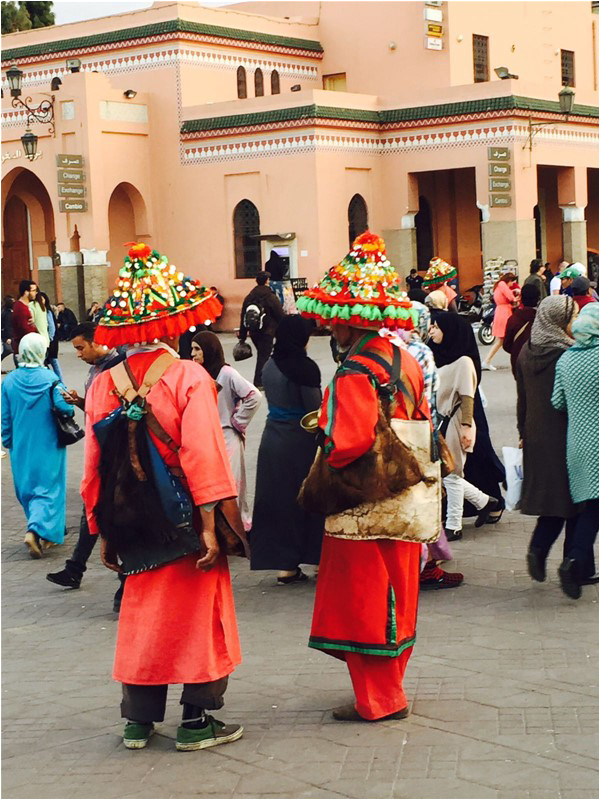
The square has been preserved through UNESCO’s cultural heritage program, which deserves its own story. This effort was entitled “Masterpieces of the Oral and Intangible Heritage of Humanity”. Over time, this project managed to provide such oversight to over 70 countries and places, including the traditional Kunqo Chinese operatic tradition, Nogaku the Japanese puppet tradition and the Spanish Castelles cultural traditions. The effort to preserve the intangible is such an important part of the Marrakech experience that one feels it in many ways - through sights, sounds, smells and tastes which are unique and magical.
Tahir Shah was right. In his ode to Marrakech, he describes it as a journey, not a destination. Shah explains that his father Idris Shah’s philosophy was something like this: “Learn to use your eyes as if they are ears and you become connected with the ancient heritage of man, a dream world for the waking mind”.
The art of story-telling is not lost in Marrakech. At one end of the square, an old man was recounting an anecdote whilst young children listened to him spell bound. “It was like stepping back into time, as people must have stood in that spot for hundreds of years telling their own stories.” Shah described it very well in his conversation with his father: “There is something else, Tahirjan, another kind of story. It’s the most powerful of all. You see it’s the kind of story that’s lived in a place since the beginning of time. It’s always there, buried in the culture, lying asleep. Most people don’t even know where it is. But it is.”
“When will it be told, Baba?
“When the time is right…. And people are ready to understand it.”
Because of Tahir Shah, I felt I was ready to understand it. I left Morocco with a strong curiosity about the tradition of storytelling and its usefulness - not as a skill but as an education about life. Tahir Shah and his stories have convinced me of its strong transformative powers. So when you next visit a place, consider taking along not a guidebook or a guide but an author who has lived in and breathed its atmosphere and knows its story. If you are lucky, you will be able to enter the dream world for the traveller’s waking mind.
Through books I have explored the deserts of North Africa with Michael Ondaatje’s The English Patient, through the eyes of Bill Bryson I have hiked through America and through Auden’s poetry I have retraced my steps in the English countryside. Books can sometimes be the perfect travelling companion, particularly on a solitary voyage when one needs a companion who can communicate without being talkative.

Marrakech is a hard city not to fall in love with
Recently, I made a quick trip to Morocco with Tahir Shah’s In Arabian Nights: A Caravan of Moroccan Dreams. This transformed an ordinary work trip into an amazing getaway – based on a very different way of seeing North Africa, replete with ancient storytellers and snake merchants. Despite visiting Morocco several times, I had never made it to Marrakech and once there, I instantly regretted not having made the effort earlier.
Tahir Shah has quite an interesting background. His father Idris Shah was known for his inimitable book on the Sufis. Having lived in London for a few years, Shah and his family decide to move to Morocco after he fell in love with a dilapidated house in Casablanca and then restored it. The books he writes about the experience are eminently readable and very evocative; one feels the vibrancy of his personality and a great sense of warmth through his text.
Marrakech is a hard city not to fall in love with. Tahir Shah was not the only one to lose his heart there. The iconic French designer, Yves Saint Laurent, once declared that Marrakech had taught him everything about color. His villa and stunning gardens, Les Jardins Majorelle, are one of the most visited sites in Marrakech. He wisely chose this peaceful oasis as his final resting place. Reputedly one of the most luxurious gardens of the world (that’s right: it ranks up there with our very own Shalimar gardens in Lahore), the whole garden is accented with peacock green and Mediterranean blue colours - with desert cacti and blooms in equal balance. The use of color is critical in experiencing Marrakech. Tahir Shah’s lovely book highlights the colours of Morocco; whether bright lapis blue or warm terracotta rust.


The Jardins Majorelle are a microcosm of Moroccan taste; with traditional cedar wood, sculpted plaster work and terracotta bathed in warm Mediterranean sunshine
The grounds had originally been designed by Pierre Majorelle and fallen into disrepair until YSL and his partner restored them with such attention to detail and stylistic flair that one stops dead in one’s tracks at the beauty of it. Each section houses many different forms of flowering plants, including desert cacti and fountains. YSL designs are available, as is his lesser known art exhibit which show cased the seasonal greeting cards he designed over the course of four decades. The theme was always L’Amour (love)!.
The house exhibits a small collection of Berber jewelry, clothes and a book store. The most magical room showcases Moroccan gems and one looks up at the starry night sky while doing so. The aesthetics throughout the villa are simple, using motifs such as green and blue tiles that make it instantly and recognisably Moroccan.
Majorelle Bleu has actually been patented into its own paint color by YSL. Though I have tried to replicate this in my garden at home, it does not match the unique Moroccan tone. The Jardins Majorelle are a microcosm of Moroccan taste; with traditional cedar wood, sculpted plaster work and terracotta bathed in warm Mediterranean sunshine. The hotels around the old District are also a breathtaking tribute to the sophisticated architecture and rich artisanal culture of Morocco.


The image most associated with Marrakech is the main square of Jemaa el-Fnaa, the congregation square which is the epicentre for the Marrakech souk. It changes character as day gives way to night. One enters through smaller side streets lined with miniature trees laden with fresh oranges. Snake charmers chase you in the hope of hypnotising you into handing over cash for photos with their snakes. Berber men offer fresh mint tea served from silver tea pots and an old medicine man sits forlornly among piles of large slate gray ostrich eggs.
As I wandered around, the evening air was musky and hazy and smelt of traditional street food, whether the Moroccan style paratha or the fresh grilled kefta. Large makeshift tents served fresh cocktails to young couples - fresh blood red orange juice and tart lime juice with mint.
Various music groups gather in different sections of the square, drumming to traditional folk songs. Over the course of the evening, I was left alone to observe the performing arts spectacle. Local families wandered around, kids fascinated not only by the snakes but a pesky little monkey with pampers on, swaying to modern Arabic music.

The square has been preserved through UNESCO’s cultural heritage program, which deserves its own story. This effort was entitled “Masterpieces of the Oral and Intangible Heritage of Humanity”. Over time, this project managed to provide such oversight to over 70 countries and places, including the traditional Kunqo Chinese operatic tradition, Nogaku the Japanese puppet tradition and the Spanish Castelles cultural traditions. The effort to preserve the intangible is such an important part of the Marrakech experience that one feels it in many ways - through sights, sounds, smells and tastes which are unique and magical.
Tahir Shah was right. In his ode to Marrakech, he describes it as a journey, not a destination. Shah explains that his father Idris Shah’s philosophy was something like this: “Learn to use your eyes as if they are ears and you become connected with the ancient heritage of man, a dream world for the waking mind”.
The art of story-telling is not lost in Marrakech. At one end of the square, an old man was recounting an anecdote whilst young children listened to him spell bound. “It was like stepping back into time, as people must have stood in that spot for hundreds of years telling their own stories.” Shah described it very well in his conversation with his father: “There is something else, Tahirjan, another kind of story. It’s the most powerful of all. You see it’s the kind of story that’s lived in a place since the beginning of time. It’s always there, buried in the culture, lying asleep. Most people don’t even know where it is. But it is.”
“When will it be told, Baba?
“When the time is right…. And people are ready to understand it.”
Because of Tahir Shah, I felt I was ready to understand it. I left Morocco with a strong curiosity about the tradition of storytelling and its usefulness - not as a skill but as an education about life. Tahir Shah and his stories have convinced me of its strong transformative powers. So when you next visit a place, consider taking along not a guidebook or a guide but an author who has lived in and breathed its atmosphere and knows its story. If you are lucky, you will be able to enter the dream world for the traveller’s waking mind.

